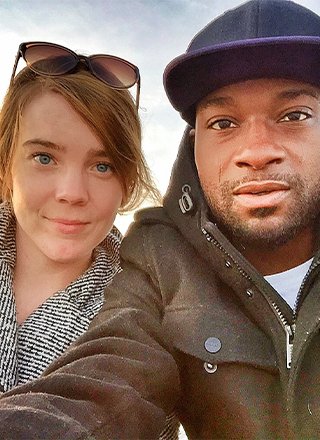As Americans United for Separation of Church and State celebrates its 75th anniversary this year, so too does a landmark religious freedom case decided by the U.S. Supreme Court 75 years ago this month: Everson v. Board of Education of Ewing Township.
That’s not a coincidence, as the outcome in Everson was one of the catalysts that led to the formation of Americans United.
Everson is a bit of a paradox – technically, it was a narrowly decided loss for church-state separation advocates. The Supreme Court let stand a New Jersey law that used tax dollars to reimburse parents for the cost of busing children to both public schools and to religious and other private schools.
And yet, the majority opinion (as well as the two dissents) offered rousing endorsements for the constitutional principle of church-state separation. In particular, the opinion went to great lengths to spell out the history and intent of the First Amendment’s Establishment Clause, which prevents government from establishing, or favoring, religion.
“Everson was the first Supreme Court case to explain in detail what the Establishment Clause means,” said Alex J. Luchenitser, Americans United’s associate vice president and associate legal director. “It also was the first Supreme Court case to clearly hold that the Establishment Clause applies to the states, not just to the federal government.”
Writing for the majority, Justice Hugo L. Black said, “The ‘establishment of religion’ clause of the First Amendment means at least this: Neither a state nor the Federal Government can set up a church. Neither can pass laws which aid one religion, aid all religions, or prefer one religion over another. Neither can force nor influence a person to go to or to remain away from church against his will or force him to profess a belief or disbelief in any religion.
“No tax in any amount, large or small, can be levied to support any religious activities or institutions, whatever they may be called, or whatever form they may adopt to teach or practice religion,” Black continued. “In the words of [Thomas] Jefferson, the clause against establishment of religion by law was intended to erect ‘a wall of separation between Church and State.’”
Luchenitser also noted the significance of the historical context that’s detailed in Black’s opinion: “Everson is further important because it de- scribes the historical events that led to the enactment of the First Amendment’s Establishment and Free Exercise Clauses and explains that the two clauses should be understood in light of those historical events. In particular, Everson holds that these two clauses, ‘in the drafting and adoption of which [James] Madison and Jefferson played such leading roles, had the same objective and were intended to provide the same protection against governmental intrusion on religious liberty as the Virginia [S]tatute’ for Religious Freedom, which was authored by Jefferson and guided to passage by Madison.
“Everson thus provides substantial support for relying on the writings of Jefferson and Madison – who were both strong advocates of church-state separation and strong opponents of public funding of religion – in understanding and applying the Establishment and Free Exercise Clauses,” Luchenitser said.
And yet, the Everson opinion forced New Jersey taxpayers to pay for busing that benefited private religious education. The five-justice majority ruled that the busing law principally served the purpose of providing safe transportation for all students. “The First Amendment has erected a wall between church and state,” Black concluded. “That wall must be kept high and impregnable. We could not approve the slightest breach. New Jersey has not breached it here.”
The four dissenting justices agreed with the majority that the separation of religion and government is vitally important – and that’s why they would have struck down the New Jersey law.
The First Amendment’s religion clauses were “intended not only to keep the states’ hands out of religion, but to keep religion’s hands off the state, and, above all, to keep bitter religious controversy out of public life by denying to every denomination any advantage from getting control of public policy or the public purse,” wrote Justice Robert H. Jackson. “Those great ends, I cannot but think, are immeasurably compromised by today’s decision.”
Justice Wiley B. Rutledge also wrote a dissent that was joined by Jackson and two other justices. In it, Rutledge warned of the slippery slope he saw the country heading toward by allowing public funds, no matter how small the amount, to be used for the benefit of religious education.
“Two great drives are constantly in motion to abridge, in the name of education, the complete division of religion and civil authority which our forefathers made. One is to introduce religious education and observances into the public schools. The other, to obtain public funds for the aid and support of various private religious schools,” Rutledge wrote. “In my opinion, both avenues were closed by the Constitution. Neither should be opened by this Court.
“Now, as in Madison’s day, it is one of principle, to keep separate the separate spheres as the First Amendment drew them, to prevent the first experiment upon our liberties, and to keep the question from becoming entangled in corrosive precedents. We should not be less strict to keep strong and untarnished the one side of the shield of religious freedom than we have been of the other,” Rutledge concluded.
Nine months later, the court’s decision, as well as Rutledge’s warning, would serve as inspiration for a group of religious and educational leaders meeting in Chicago to draft a mission statement for what would become Americans United: “Its single and only purpose is to assure the maintenance of the American principle of separation of church and state upon which the Federal Constitution guarantees religious liberty to all the people and all churches of this Republic.”
This manifesto enumerated several key church-state principles and voiced strong support for secular public education. It also referenced Rutledge’s dissent in Everson: “The four dissenting justices in the bus-transportation case solemnly warned the nation that these two breaches in the wall of separating church and state are only the beginning. ‘That a third and a fourth breach, and still others, will be attempted, we may be sure,’ say the dissenting justices.” (The first breach Rutledge referenced was the 1930 case Cochran v. Board of Education, in which the court unanimously upheld a Louisiana law that allowed the state to buy and lend secular textbooks to students in parochial schools; that law had not been challenged on Establishment Clause grounds, however.)
AU’s mission statement noted the organization was “determined to assert its full strength to the end that there shall be no more breaches in this wall, that the breaches already made shall be repaired, and that the complete separation of church and state in an undivided state-supported educational system shall be maintained.”
Seventy-five years later, Everson’s legacy is as much a contradiction now as it was then. In 1947, it was both a loss and a resounding endorsement for church-state separation. Now, in light of recent Supreme Court decisions like Espinoza v. Montana Department of Revenue and Trinity Lutheran Church v. Comer, both of which allowed more taxpayer funding to be funneled to religious schools and organizations, and the pending decision this term in Carson v. Makin, in which Maine taxpayers could be forced to pay for explicitly religious instruction, the outcome in Everson seems very limited by comparison.
“Despite its holding allowing payment of the costs of bus transportation to religious schools, Everson is properly thought of as the first in a line of cases that strictly limited public funding and aid for religious schools,” Luchenitser said. “A series of Supreme Court decisions strengthened those limits over the next several decades, but by the 1990s the restrictions were gradually being eroded.
“Recent Supreme Court decisions such as Trinity Lutheran, Espinoza, and now potentially Carson, are undermining separation of religion and government even further by concluding that there are situations in which government bodies must fund religious institutions equally with nonreligious ones,” Luchenitser said.
It’s probably little comfort to Justice Rutledge, who died two years after writing his dissent in Everson, that his warning of future breaches in the church-state wall was prescient.


